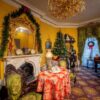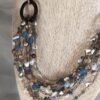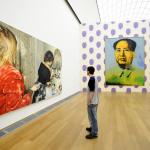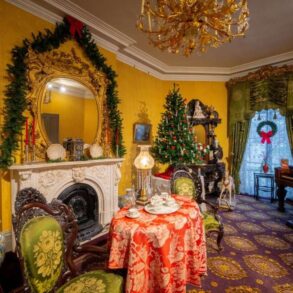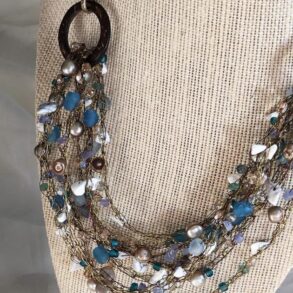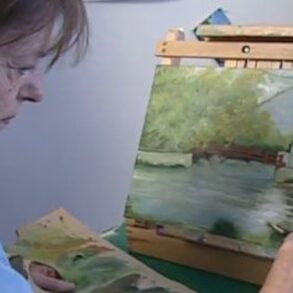Editor’s Note: This story originally appeared in On Balance, the ARTnews newsletter about the art market and beyond. Sign up here to receive it every Wednesday.
In the first week of July, when all eyes were on Japan for the second edition of the Tokyo Gendai fair, new developments elsewhere in Asia may have gone unnoticed. As it happens, things are heating up in Singapore. The country’s biggest art fair ART SG (which shares its organizers with Tokyo Gendai) recently announced new cultural partners; there are more and more pop-up exhibitions by regional curators and gallerists; a major young collector has opened a new retail space that will spotlight creativity; and a gallery from Australia recently opened a new space there again.
And a couple weeks ago, Singapore got its latest shot in the arm when influential Asian gallery Tang Contemporary Art launched its new outpost there.
Adding to Tang’s seven outposts across Hong Kong, Beijing, and Seoul, the new Singapore gallery measures 7,500 square feet and is located on the sixth floor of the Delfi Orchard building, in an older area of the city’s shopping district, near a wealthy residential area with elite schools and embassies.
Tang opened in Bangkok in 1997. Since then, founder Zheng Lin told ARTnews, the gallery “has gone through several stages: from 1997 to 2006 was the stabilization phase; after entering Beijing in 2006 was the expansion phase; and from 2015 onward was the international expansion phase” when the gallery launched in other parts of East Asia. In January, Tang even expanded its original space in Bangkok, timing the additional new space for young artists to the launch of the new Kunsthalle Bangkok.
The Singapore space, Lin said, has been in the planning for three years, but “due to the pandemic and policy uncertainties” it took him a full two years to find a good location. (Back in February, Lin teased the Singapore location in an interview with Artnet News’s Cathy Fan, saying “it pav[es] the way for our eventual expansion into European and American markets.”)
The opening exhibition features a selection of works from prominent Asian artists including Ai Weiwei, Yue Minjun, Wu Kukwon, and Gongkan, among others. The works were displayed in the manner of a conventional white space gallery targeting sales-friendly collectors. The opening on June 28 saw a steady stream of visitors including Chinese collectors and influencers, as well as Singapore media and collectors.
Lin envisions Singapore as Tang’s strategic hub in Asia: “From 1997 to 2006, we developed in Southeast Asia and established cooperation with some Southeast Asian artists and collectors. However, the art markets in countries surrounding Bangkok were immature, whereas Singapore is an international metropolis, ideal for art transactions with abundant resources and significant influence.”
While Singapore’s gallery scene has witnessed its fair share of peaks and troughs, Tang is launching its new space during an interesting time for the city’s art scene. On June 2, Australian gallery Sullivan+Strumpf opened a new studio space in Singapore’s Kallang district. This move comes four years after the gallery left its previous physical premises in the city.
“For us, this is a significant location that acts as a bridge between Australia, Asia, and the rest of the world, and we see our studio as a vehicle to introduce the growing Australian market to Asian artists and vice versa,” the gallery’s Singapore-based director Megan Arlin said.
There is also the latest creative cluster, New Bahru, at the premises of a former local high school, launched by Wee Teng Wen, son of Singaporean billionaire Wee Ee Cheong, as well as a fourth-generation member of the family behind United Overseas Bank, and former board member of the Singapore Art Museum.
Known locally as the founder of popular hospitality and lifestyle brand The Lo & Behold Group, Wee told ARTnews, “Our vision for New Bahru is to be the best representation of Singapore that ultimately puts our city on the global cultural map.”
Meanwhile, Singapore’s biggest art fair ART SG recently announced new cultural partners including the Delfina Foundation in London and added new members to its advisory board, including Hong Kong collector Alan Lau. Even pop-up exhibitions by regional curators and gallerists in the city have witnessed an uptick during the typically off-peak summer season.
The renewed surge in activity could very well be disparate efforts to make up for an increasingly restricted local and global art market.
Veteran Singapore-based dealer Kevin Cuturi pointed out that 2023 saw the beginning of a correction in the art market, which has been confirmed in 2024. “[The] post-pandemic years saw an incredible extravaganza, in terms of buying art. We were selling as much online (through platforms such as Instagram) as we were selling in the physical gallery. Online sales [for us] have come down a lot since second half of 2023 and collectors are being more selective now with their purchases.”
In Cuturi’s view, the art market has gone back to what it was like before the pandemic, “when galleries were more reliant on their regular collectors and only met new collectors through their physical gallery and programming.”
“When I speak to my gallery colleagues around the world, the sentiment is very similar, so I do not think this is a Singapore situation. It’s more a global one,” he added.
Still, Singapore is making some progress in the necessarily slow process of developing a mature art market. “Culture appreciation, which in my opinion is the foundation of any art market, does not happen overnight,” Cuturi said. “It’s an educational process that takes time, energy and passion, and the more cultural players we have in Singapore, the better.”

